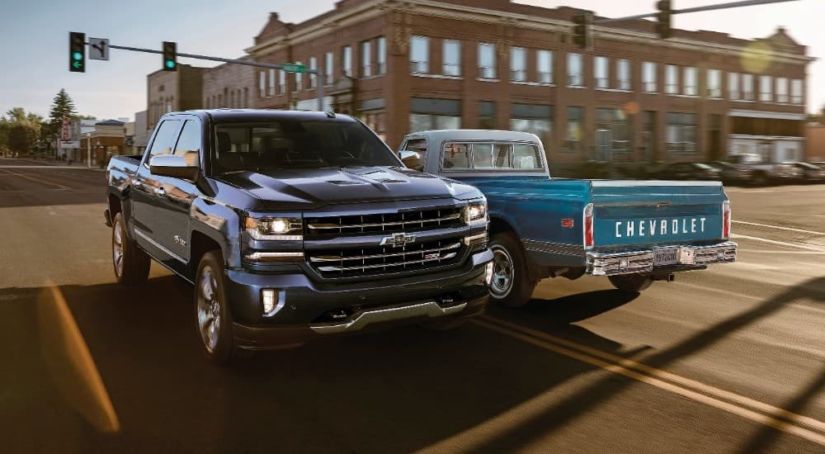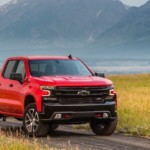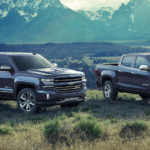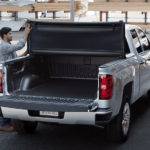Used Chevy trucks are some of the classiest vehicles in America’s history. Ever since the 1910s, Chevrolet has provided consumers with a reliable vehicle that can provide them with utility for years to come. In an examination of Chevrolet’s storied past, let’s take the time to research and appreciate some of Chevy’s past offerings. While today’s car manufacturers have all but perfected the art of making a functional truck, there have been some pretty interesting design choices over the year. Let’s explore some of the more notable options available in chronological order of how they appeared.
1910-1950
Since it only makes sense to start at the beginning, we are going to open this discussion by exploring the first tuck model that Chevrolet ever created. First released in 1918, the first Chevy truck set out to increase over the storage capacity of their consumer cars both in terms of volume and weight. When examined carefully, it shows that these trucks were nothing more than Chevrolets passenger vehicle that had it’s back seats removed, and its suspension strengthened. Vehicles back in those days had no variety and limited accessories. By today’s standards, these trucks were abysmal in performance and comfort. At the time, however, these were workhorses that made the lives of those around them much more manageable. Finding a vehicle that is this old, no matter the condition, are a treat for collectors and historians alike.
Moving into the ’20s, Chevy finally provided consumers with some different body styles to meet different consumer needs. The significant improvement over the previous model was the “light delivery chassis.” When we think of the old mailman or milkmen, chances are you imagine them driving around in a vehicle of this style. Chevrolet also gave regular consumers a more attractive option with the introduction of the model G. The model G had more curves, style, and had a truck bed on the “exterior” of the car. Chevrolet powered through the ’20s without skipping a beat.
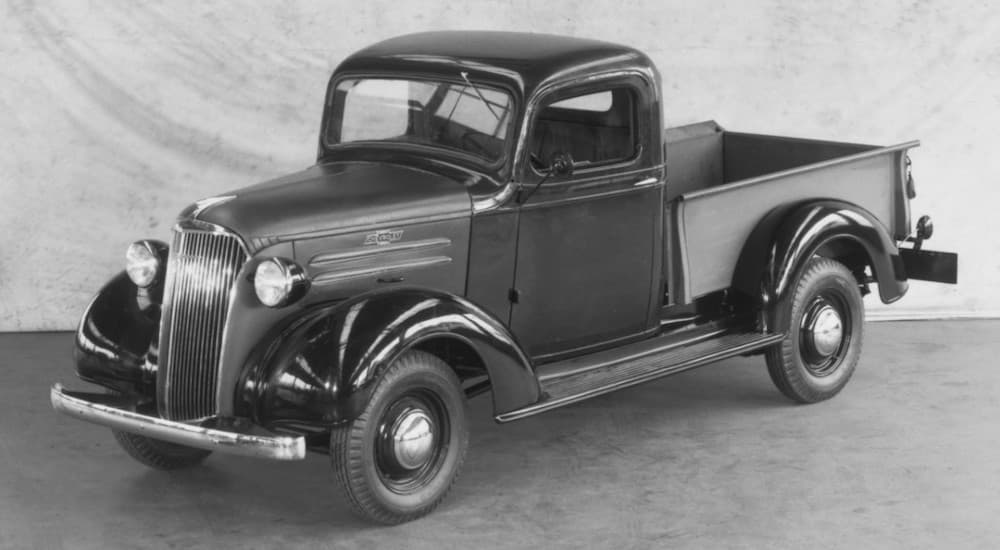
The ’30s are where you start to see the trucks that look like modern-day hot-rods. With rounded edges and more dramatic wheel-well flares, trucks of this era were more exciting than ever before. Aside from the improved looks, Chevy also made notable improvements to the front suspension, allowing for a more comfortable ride. Trucks became heavier at this time, but engine sizes were increasing, and the efficiency wasn’t too bad for the time. The time between the depression and WW2 were quiet times for the truck market.
Chevrolet’s slow and steady year after year improvements were put on pause for the next decade. Unfortunately, it is impossible to talk about the ’40s without the mention of World War 2. Chevrolet helped The Allies by providing the G506; this is the traditional looking army truck often shown transporting troops. (The one with the cloth canvas draped over the truck bed.) All other vehicles during the war were built with utility in mind. Chevrolet was no longer focused on nice lines and flashy curves. You’ve seen the boys in M*A*S*H hop out of the G506 on a few occasions, this legend of a vehicle will always be synonymous with this decade. Collecting a used truck from this era will serve more as a set piece rather than a Sunday ride.
1950’s And Onward
Chevrolet was able to thrive during the years following World War 2, and we can see it in their trucks. Chevy was once again able to focus on style, and boy did they take advantage of it. This era’s truck was just as comfortable in the school parking lot as it was on the job site. Seen in movies like Dazed and Confused and The Texas Chain Saw Massacre, the Chevy 3100 is a sharp truck and is a staple of this time frame. Finding a restored truck from this era would be a vehicle you’d proudly take for a cruise every chance you get.
While it technically came out in 1959, Chevrolets El Camino is iconic with the ’60s and ’70s truck lineup. While Chevy continued to make workhorse trucks for farmers and tradesman, they also broke into a smaller market. While not tiny, the El Camino had the interior consisting of a comfortable bench with a truck bed on the back. Average consumers found a great vehicle that they could take on dates but still be able to haul home a new refrigerator from the department store. With production ending in 1987, generations of adults have been born wondering when this masterpiece is going to make its way onto the show floor again. With American car makers seeing more and more profit from the truck market, we can only keep our fingers crossed for an eventual revival.
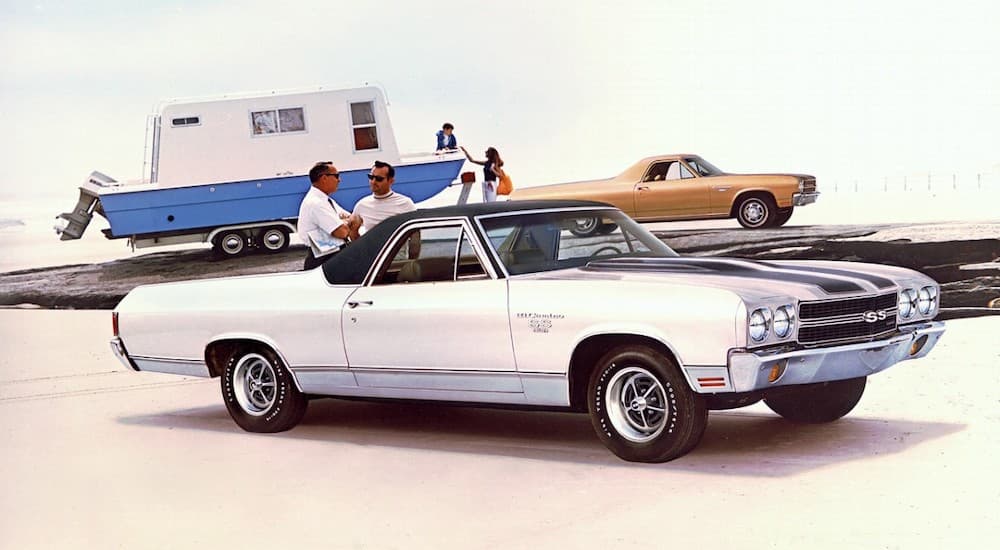
Trucks after the eighties have a lot in common with the trucks that we see on the market today. Chevy started to find the right blend of curves and sharp lines, resulting in a professional-looking package regardless of its environment. Nowadays, the best value you can get out of a used Chevy truck would be from either the Colorado or the Silverado, which stemmed from the 1959 to 2002 C/K series trucks. A tricked out, used Colorado can provide you with the entry-level pickup with all of the useful benefits. An excellent used Silverado is better utilized by those who have been working for quite a few years and need the power to transport tools and material. Trucks have come a long way in the past decade. Long gone are the days where we can stereotype that one truck is better than the other. Ultimately, it comes down to what is the right value for the buyer. You can’t go wrong with a used Chevy truck from the past decade.
Where Will They Go From Here?
It’s sometimes hard to remember that all of the classic trucks that we admire today were just standard vehicles back in their time. While today’s trucks seem relatively standard, in ten or twenty years, we may look back at modern cars with nostalgia. Short of another world war, Chevrolet I’m sure will continue to refine their vehicles resulting in an ultimate value proposition. If this writer had to guess, I would think that trucks will begin to sharpen the line between work vehicles and personal vehicles. Unless another world war prevents Chevy from making progress, I wouldn’t be surprised if Chevy tailors the Colorado to those who want a truck. With the Silverado and above will be focused on utility and capacity.
There’s no doubt in my mind that the next generations will look back on the Silverado with admiration. It’s possible that, due to modern-day design, these trucks last a lot longer than the vehicles before the ’90s. Regardless of what happens to the current lineup of used Chevy trucks, the future looks bright for Chevrolet. With improvements to efficiency happening every day, maybe Chevy will improve the truck market in ways that we can’t even imagine yet. Either way, with their proven track record, we more than excited to see what they come up with. We’ll be keeping our ears to the ground so that when greatness strikes, we’ll be ready.
